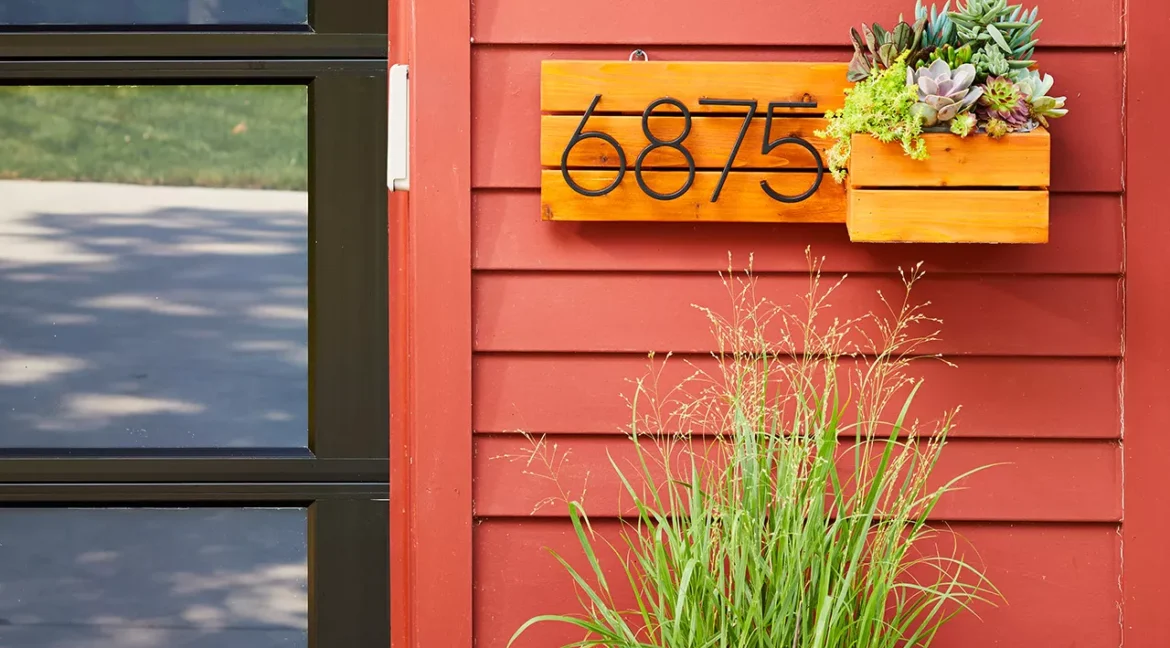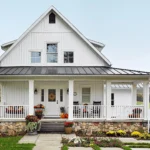Install house number to make sure guests can identify your home.
Published on October 4, 2023
:strip_icc():format(webp)/house-numbers-planter-9bfa9209-b84d8c749cd14abc80fa9b7e85cae530.jpg)
House numbers are used to identify homes, making it easier for guests, delivery drivers, and other visitors to find the correct address. Depending on the municipality, house numbers are often required, so this isn’t a task that can be put off indefinitely. Take some time to figure out what type of house numbers to use, such as concrete, stone, stainless steel, vinyl, wood, or even painted numbers.
It’s also a good idea to think about where the house numbers will be installed. Typically, house numbers are put near the mailbox or above the front door on the side of the home that faces the street. However, there are a variety of options for house number placement. Just make sure that the selected location follows any community or municipal guidelines. Use this guide to learn how to install house numbers and where to put them.
House Number Types
Before starting this project, you will need to purchase new house numbers to mount outside the home. There are several options to choose from, so take some time to decide on the right type for your home.
- Concrete or stone house numbers are typically installed in a front garden where the bulky size stands out prominently.
- Weathering steel has a similar level of durability as stainless steel, but the appearance of the steel has a reddish hue that makes it appear aged and worn.
- Vinyl house numbers are an inexpensive option, though this material isn’t as durable as other house number materials. Depending on the product, some vinyl house numbers have an adhesive backing that can be installed directly to the exterior of the home, instead of using screws.
- Stainless-steel house numbers are one of the most common options. Use screws to mount these house numbers to the front of the house or even to a nearby fence.
- Wood house numbers are vulnerable to rain, sleet, hail, and snow, so before installing them it’s a good idea to sand and seal the wood with paint or stain. After sealing the wood, you can mount the numbers using nails or screws.
- Painted house numbers are a simple, affordable way of ensuring visitors know which house is yours. Instead of purchasing house numbers, just grab a can of exterior paint and use a paintbrush to apply the numbers. Check local guidelines before choosing this type of house number because some municipalities may not approve of this method.
Where to Install House Numbers
The location of house numbers is an important matter to consider before purchasing new ones or starting installation. Also, it’s recommended to check any local community or municipality guidelines for house number installation. This is because most municipalities have specific regulations for the size, position, and even type of house numbers that can be used in the area.
When deciding on the location of the house numbers, it’s necessary to find a spot that is visible from the nearest roadway. If the home is not visible from the street due to distance or vegetation, the house numbers should be mounted on a fence or post in front of the house where they can be seen. Also, make sure to consider the background color for the house numbers. If the color of the background is too close to the color of the house numbers, they may be difficult to see from a distance or at night.
What You’ll Need
Equipment / Tools
- Measuring tape
- Pencil
- Level
- Drill
- Caulking gun
Materials
- House numbers
- Screws
- Screw anchors
- Construction adhesive
- Waterproof caulk
Instructions
How to Install House Numbers
- Measure and Mark the Installation AreaUse a measuring tape and a level to find the right height and position for the new house numbers. Some house numbers will come with a helpful installation template that can be used to mark the screw holes or mounting location.Once you’ve found the right area for installation, use a pencil to mark the area. If the house numbers attach with screws, mark through the screw holes in the house numbers, If they attach with adhesive, you’ll need to make marks at the side of the numbers rather than through the holes.
- Drill Pilot Holes for the House NumbersIf the house numbers attach to the target surface with screws, you’ll need to drill pilot holes to mount the numbers. Typically, the house numbers will come with pre-drilled holes and templates to help with spacing and leveling.Use a drill bit that is about half the diameter of the provided screws. Line up the drill bit with the marks that you made in the first step, then drill pilot holes to mount the house numbers.If you are mounting the house numbers to a brick wall, you’ll need to use a masonry bit to get through this tough material. If the numbers are being mounted to a wood door or siding, a standard wood drill bit should be fine.
- Check the AlignmentBefore installing house numbers, it’s a good idea to verify that the selected location is level and properly aligned so that the numbers don’t look crooked. The screw holes in the house numbers should line up with the pilot holes. Similarly, if you are working with adhesive house numbers, it’s important to ensure that the marked location is level and properly aligned before proceeding.
- Mount the House NumbersIn order to mount house numbers with screws, it’s necessary to fire insert screw anchors. Drywall anchors won’t cut it for masonry work, so make sure to get the right type and size of screw anchor for the job.After inserting the anchors, line up the first house number with the pilot holes, then secure the house number using a screwdriver or drill. Repeat this process with any additional house numbers.If you are installing adhesive house numbers, wipe down the area to ensure the adhesive can bond properly to the surface. Peel off the protective backing and firmly press the house numbers to the target surface.
Similarly, you may be able to install some house numbers by applying construction adhesive to the back of the numbers before sticking each number to the target surface. However, if you install the numbers crooked, uneven, or in the wrong location, they can be difficult to remove without causing damage to the home. - Patch or Fill HolesIf there were any holes left over from old house numbers or if you made any mistakes when drilling the pilot holes, it’s important to patch these holes. Use a caulking gun with waterproof exterior caulk to fill any holes. If the patch is too noticeable, you can touch it up with a bit of paint so that it matches the surrounding area.
Source: Better Homes and Gardens



